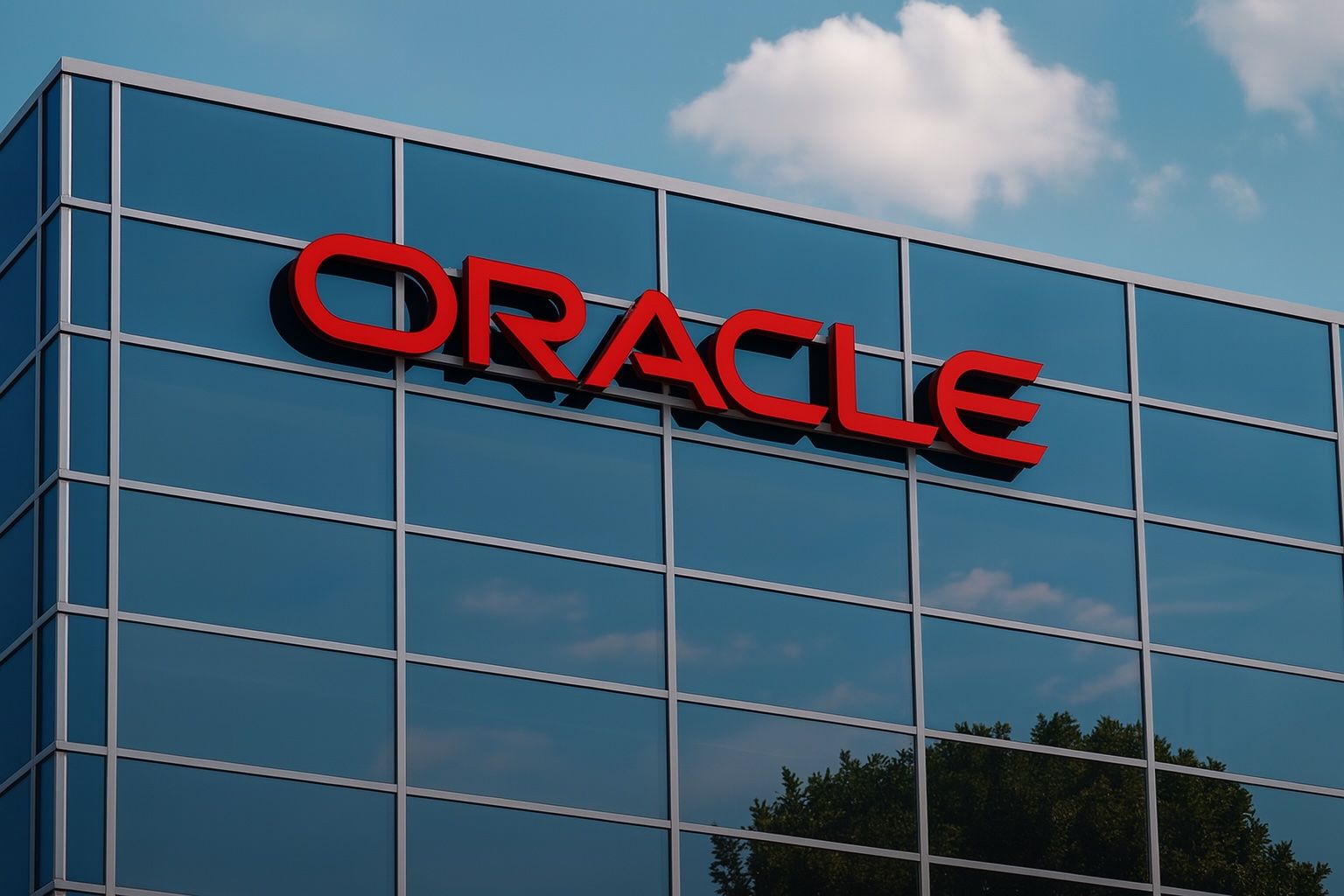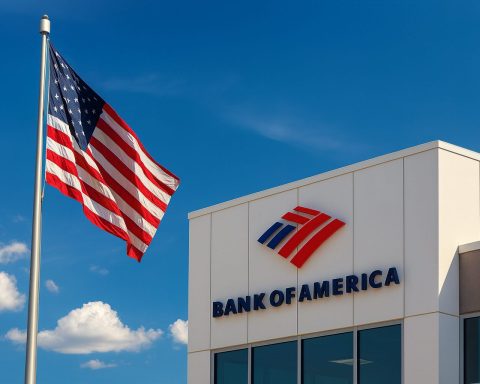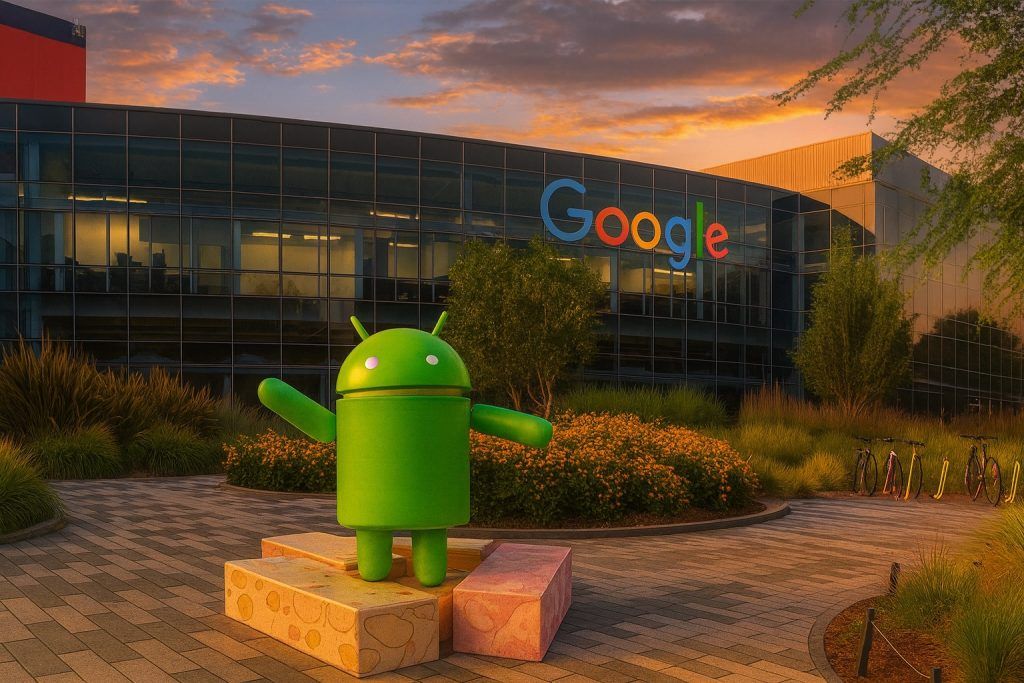Oracle stock is back under intense pressure.
By mid-session on Friday, November 21, 2025, Oracle Corporation (NYSE: ORCL) shares were trading around $195, down roughly 7% on the day, putting the stock among the biggest losers in the S&P 500. Different real‑time feeds show Oracle changing hands in the mid‑$190s, off about $15 from Thursday’s close near $210. [1]
That slide caps a bruising November for Oracle and comes as a fresh wave of headlines focuses on:
- Oracle’s $18 billion in new AI‑related bond issuance and rising debt concerns [2]
- Jim Cramer and other commentators warning that “the Oracle case is instructive” for AI risk because it is borrowing heavily to build data centers for OpenAI [3]
- New analysis highlighting widening credit‑default swap (CDS) spreads on Oracle as a hedge against an AI crash [4]
- Mixed views from analysts and strategists on whether the recent drop is a long‑term opportunity or a sign of deeper problems [5]
At the same time, big institutional investors are adding to their Oracle positions, and the company has just appointed a new board member with deep healthcare and diagnostics experience. [6]
Below is a detailed, news‑style rundown of Oracle stock today — price, key news, and what it all might mean for ORCL.
Oracle Stock Today: Price, Performance and Valuation Snapshot
- Price (intraday, Nov 21): around $195–196, down about 7% on the session [7]
- Move vs. Thursday close: roughly –$15 per share
- 52‑week range: about $118.86 (low) to $345.72 (high) [8]
- Market cap: roughly $560–600 billion depending on the live print [9]
- Valuation: price‑to‑earnings ratio around 48–49x, with a P/E/G near 3x [10]
- Balance sheet: debt‑to‑equity ratio reported around 3.3, with current and quick ratios of about 0.62 — a sign of a highly leveraged but still investment‑grade balance sheet. [11]
Oracle’s shares have fallen roughly 19–20% from mid‑November highs near $260, according to FX Leaders’ analysis, yet they remain up about 35% year‑to‑date, meaning long‑term investors are still sitting on sizable 2025 gains despite the sharp pullback. [12]
Why Oracle Stock Is Falling Today
1. AI Spending and the Big Tech Bond Wave
The biggest macro story around Oracle today is debt‑funded AI spending.
A detailed Reuters analysis, republished across multiple outlets, notes that since September, four major “hyperscalers” — Alphabet, Meta, Oracle and Amazon — have together sold nearly $90 billion in bonds, with Oracle’s portion about $18 billion. [13]
The money is largely earmarked for AI‑ready data centers, including huge GPU‑heavy clusters that will power generative AI models and cloud services over the next several years. AI capital expenditure across big tech is projected to climb toward $600 billion by 2027, up from a little over $200 billion in 2024. [14]
Key points from that reporting:
- AI capex is rising far faster than in previous technology cycles.
- Public bond markets, not just cash flows, are increasingly footing the bill.
- Credit spreads on new tech bond deals have ticked higher, suggesting investors want extra compensation for the surge in supply. [15]
Oracle is far from the only company loading up on debt for AI, but its leverage and the scale of its OpenAI‑driven build‑out have made it a focal point for worries about an “AI bubble” financed by bonds rather than earnings.
2. Jim Cramer: “The Oracle Case Is Instructive”
In a widely shared piece originally from Insider Monkey and syndicated via Finviz, Jim Cramer singled out Oracle as a cautionary example for AI investors. [16]
According to that report, Cramer argued that:
- Larry Ellison is “pushing all of his chips” on AI, aggressively borrowing to fund massive data centers.
- Oracle is borrowing “a fortune” to build facilities for OpenAI, which he notes has about $1.4 trillion in spending commitments that may or may not fully materialize.
- He called this dynamic the “Achilles heel” of the AI build‑out, warning that investors may be underestimating financing risk. [17]
Cramer’s comments landed on the same day as the bond‑market analysis, adding a high‑profile voice to concerns that AI infrastructure spending might be getting ahead of itself, at least from a risk‑reward standpoint for stockholders.
3. Credit‑Default Swaps: Oracle as a Hedge Against an AI Crash
Earlier this week, Seeking Alpha highlighted that credit‑default swap (CDS) spreads tied to Oracle have widened as investors look for ways to hedge risk in the AI trade. [18]
That piece describes how:
- Oracle’s heavy AI‑related borrowing has made its CDS market one of the more active ways to short or hedge AI exposure.
- Rising CDS spreads indicate growing demand for protection against a potential AI‑related downturn, even while Oracle itself remains investment‑grade and fundamentally profitable. [19]
By itself, wider CDS spreads don’t mean a default is remotely likely; they do, however, signal that professional investors are paying more attention to Oracle’s balance‑sheet risk as AI capex ramps.
4. “3 Big Tech Stocks Sliding”: Oracle Joins an AI‑Heavy Sell‑Off
A MarketBeat/Investing.com feature on “3 Big Tech Stocks Sliding” put Oracle in the same bucket as other AI‑heavy names that have stumbled in November. [20]
That analysis notes, in paraphrase:
- Oracle stock has fallen in the low‑teens percentage range since November 1, following an especially strong rally in October.
- Part of the move looks like a normal correction after a big run‑up, but there are also questions about how quickly Oracle can turn its enormous AI backlog into realized cloud revenue, particularly inside Oracle Cloud Infrastructure (OCI). [21]
When investors start doubting the timing of AI payoffs, richly valued stocks like ORCL can move sharply, even if the long‑term story hasn’t changed much.
5. “AI Bubble” Headlines and November’s Worst Month Since 2011
FX Leaders ran a strongly worded piece today titled “Oracle’s AI Bubble Bursts: ORCL Eyes $150 Plunge in November—2011 Flashback Looms.” [22]
Stripped of the drama, the article makes a few key points:
- Oracle shares have spent all of November trending lower, with the stock now firmly in the low $200s to high $190s.
- That puts ORCL on track for its worst monthly performance since 2011, down roughly 19–20% from mid‑month highs around $263.
- Even after that drop, the shares are still up ~35% year‑to‑date, meaning much of the long‑term AI bull case remains priced in. [23]
The same piece reminds readers that not all analysts are turning bearish: despite an earlier Piper Sandler downgrade to a $130 target back in April, many large firms maintain “moderate buy” ratings and targets in the low‑to‑mid $300s, implying significant upside if Oracle executes on its AI and cloud plans. [24]
Fresh Oracle‑Specific Headlines on November 21, 2025
Despite the selling pressure, today’s Oracle news isn’t all negative. Several stories out on November 21 shine a more nuanced light on ORCL.
1. Big Institutions Are Still Buying Oracle Stock
Two separate MarketBeat alerts based on recent 13F filings show large asset managers adding to Oracle:
- DNB Asset Management AS slightly increased its Oracle position in Q2, to about 2.19 million shares, now worth roughly $478 million and representing around 2% of DNB’s portfolio, its 8th‑largest holding. [25]
- Legal & General Group Plc boosted its stake by about 1.3% to 11.3 million shares, valued at roughly $2.47 billion, making Oracle its 20th‑largest holding. [26]
Both pieces emphasize that around 42% of Oracle’s float is institutionally owned, and that many big funds have treated the stock as a core long‑term technology holding, even as prices swing. [27]
2. StockStory Flags Oracle as a High‑Upside but Risky Name
A StockStory feature syndicated on WRAL’s business pages — “1 of Wall Street’s Favorite Stock to Own for Decades and 2 Facing Challenges” — takes a more skeptical tone. [28]
For Oracle (ORCL), the article notes that:
- The consensus 12‑month price target stands around $343, implying roughly 65% upside from a price a little above $200 at the time of writing.
- Yet StockStory lists several risk factors, including:
- Modest average billings growth (roughly 9% over the last year).
- A history of heavy cash burn relative to growth.
- A shorter cash runway, increasing the odds of further financing that could dilute shareholders. [29]
In other words, Wall Street is bullish, but some independent analysts suspect the optimism may be overdone unless Oracle can improve cash generation and margins while it spends heavily on AI.
3. Oracle Joins Microsoft as One of the Last “Giants Standing” in the S&P 500
A 24/7 Wall St. piece, “The Great S&P 500 Shakeup Leaves Microsoft and Oracle the Last Giants Standing,” steps back from the day‑to‑day volatility. [30]
It highlights that:
- Of the top 25 companies in the S&P 500 in the year 2000, only two are still in that top tier today: Microsoft and Oracle.
- Former mega‑caps such as GE, Intel, Citigroup and Pfizer have all slipped down the rankings, while Amazon, Apple and Nvidia have risen from relative obscurity.
- Oracle’s ability to adapt across multiple tech waves — from databases to enterprise software to cloud and now AI infrastructure — is what kept it in the elite group. [31]
At the same time, the article’s live market widget shows Oracle as one of the biggest losers on the day, down a little over 7% to about $195.66 with volume exceeding 15 million shares, underscoring how even long‑term “survivor” stocks can be extremely volatile in the short run. [32]
4. New Board Member: Stephen Rusckowski
Oracle also announced that Stephen Rusckowski has joined its board of directors. [33]
According to the company’s press release (also carried on StockTitan and other outlets):
- Rusckowski is the former Chairman and CEO of Quest Diagnostics, bringing deep experience in healthcare, diagnostics and data‑driven operations.
- His expertise could strengthen Oracle’s strategic push in healthcare IT and cloud‑based clinical data, an area Oracle has been emphasizing since its acquisition of Cerner. [34]
Board additions don’t usually move a $500+ billion company’s stock in a single day, but they can matter over the long term, especially in verticals like healthcare where Oracle is trying to expand.
How Analysts See Oracle Stock After Today’s Drop
Despite the noise, consensus Wall Street opinion on Oracle stock remains broadly positive, even if less enthusiastic than at September’s highs.
From the MarketBeat coverage of institutional filings:
- Oracle carries an average rating of “Moderate Buy” from dozens of analysts.
- The average 12‑month price target sits near $322, well above today’s sub‑$200 price. [35]
However, there are clear divergences beneath that simple label:
- Some firms — including BNP Paribas, Mizuho, Bernstein and others — have boosted their targets into the $350–$400 range, reflecting confidence in Oracle’s AI and cloud strategy. [36]
- Others, such as Piper Sandler, cut their target earlier this year toward $130, citing concerns about competition, margins and the sustainability of growth. [37]
- StockStory’s critique emphasizes slower billings growth and a constrained cash runway, arguing that the 65% implied upside from current targets may not fully account for financing risk. [38]
Taken together, the message is that Oracle stock has become a high‑beta proxy for the AI infrastructure trade:
- If Oracle converts its AI backlog into high‑margin cloud revenue and keeps debt under control, today’s valuation could later look cheap.
- If AI demand or financing conditions disappoint, leverage and expectations could work in the opposite direction.
The Long‑Term AI and Cloud Story Behind the Volatility
Even as traders focus on bond yields and CDS spreads, Oracle’s management continues to pitch a multi‑year transformation centered on cloud and AI.
Oracle as an AI Infrastructure Partner
Over the past year, Oracle has:
- Deepened its partnership with OpenAI, committing to provide large‑scale GPU clusters across multiple regions. [39]
- Announced significant new cloud and AI infrastructure investments in Europe, including multi‑billion‑dollar plans for Germany and other EU markets to host sovereign and regulated workloads. [40]
- Emphasized on earnings calls that Oracle Cloud Infrastructure (OCI) is growing rapidly and that AI‑driven workloads are a major driver of that growth. [41]
External coverage of those calls and announcements has highlighted:
- Oracle’s expectation of sustained high double‑digit growth in cloud and AI infrastructure revenue over multiple years. [42]
- A huge pipeline of AI training and inference workloads that could gradually convert into recurring cloud revenue if customers follow through on their commitments. [43]
This backdrop is why many analysts still see upside to Oracle stock beyond $300, even after November’s correction. But it is also precisely why bond markets and CDS traders are paying close attention: the capex to chase this opportunity is enormous, and the ultimate returns are still uncertain.
What to Watch Next If You Follow ORCL
For investors, traders, or anyone tracking Oracle stock today, a few signposts stand out:
- AI Capex vs. Free Cash Flow
- How much of Oracle’s future AI and cloud build‑out will be funded by cash flows versus new debt?
- Bond‑market coverage suggests most hyperscalers can handle more borrowing, but the pace has accelerated enough to cause discomfort. [44]
- Cloud and AI Revenue Conversion
- Watch upcoming earnings for OCI growth rates, AI‑specific revenue disclosures, and changes to backlog.
- Articles today repeatedly emphasize concerns over how fast Oracle can turn multiyear AI commitments into actual sales and profits. [45]
- Credit‑Market Signals
- CDS spreads and yields on Oracle bonds are becoming a market barometer for AI risk. A stabilization or narrowing in spreads could signal that the worst of the credit scare is passing; further widening would suggest the opposite. [46]
- Analyst and Rating‑Agency Updates
- Any rating changes or big target cuts/raises from major banks will matter more than usual, as both bulls and bears look for confirmation. [47]
- Macro and Big Tech Sentiment
- Oracle is now trading in the same macro bucket as other “AI infrastructure” names. The MarketBeat/Investing.com piece on big tech stocks sliding shows that sentiment toward the entire AI complex can move Oracle even on company‑quiet days. [48]
Bottom Line: Oracle Stock on November 21, 2025
Today’s drop below $200 puts Oracle at the center of a larger story:
- Debt‑financed AI infrastructure is colliding with investor nerves about bubbles and credit risk.
- Oracle’s fundamental position in enterprise software and AI cloud remains strong, and major institutions continue to increase their stakes. [49]
- But the stock has become a lightning rod for debate over how far and how fast AI spending should go — and who ultimately bears the risk if it goes too far.
For now, Oracle stock today is trading like the market’s AI stress test: when confidence in AI financing and earnings runs high, ORCL rallies hard; when doubts surface, it can slide just as quickly.
As always, this article is for informational purposes only and does not constitute investment advice. Anyone considering ORCL or other AI‑linked stocks should carefully review the company’s filings, earnings calls, and their own risk tolerance — or speak with a qualified financial professional.
References
1. www.kraken.com, 2. www.reuters.com, 3. finviz.com, 4. seekingalpha.com, 5. www.fxleaders.com, 6. www.marketbeat.com, 7. 247wallst.com, 8. www.kraken.com, 9. www.kraken.com, 10. www.marketbeat.com, 11. www.marketbeat.com, 12. www.fxleaders.com, 13. www.reuters.com, 14. www.reuters.com, 15. www.reuters.com, 16. finviz.com, 17. finviz.com, 18. seekingalpha.com, 19. seekingalpha.com, 20. www.investing.com, 21. www.investing.com, 22. www.fxleaders.com, 23. www.fxleaders.com, 24. www.fxleaders.com, 25. www.marketbeat.com, 26. www.marketbeat.com, 27. www.marketbeat.com, 28. markets.financialcontent.com, 29. markets.financialcontent.com, 30. 247wallst.com, 31. 247wallst.com, 32. 247wallst.com, 33. www.stocktitan.net, 34. www.stocktitan.net, 35. www.marketbeat.com, 36. www.marketbeat.com, 37. www.fxleaders.com, 38. markets.financialcontent.com, 39. www.reuters.com, 40. www.oracle.com, 41. investor.oracle.com, 42. investor.oracle.com, 43. siliconangle.com, 44. www.reuters.com, 45. www.investing.com, 46. seekingalpha.com, 47. www.marketbeat.com, 48. www.investing.com, 49. www.marketbeat.com







